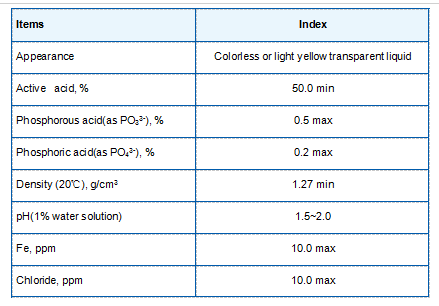poly aluminium chloride for drinking water
The Role of Poly Aluminium Chloride in Drinking Water Treatment
Water is an essential resource for life, and ensuring its safety and quality is a top priority in public health. One of the key processes in treating drinking water involves the use of coagulants, and among them, Poly Aluminium Chloride (PAC) has gained widespread recognition for its efficiency and effectiveness. This polymeric coagulant plays a crucial role in the removal of impurities and enhances the clarity of drinking water.
What is Poly Aluminium Chloride?
Poly Aluminium Chloride is a chemical compound made from aluminum and chlorine. It is typically available in a solid or liquid form and is obtained through the hydrolysis of aluminum chloride in a basic medium. This compound is favored in water treatment due to its unique properties, which include high charge density and varying molecular weights, making it extremely effective in coagulation processes.
Mechanism of Action
The primary function of PAC in water treatment is coagulation. When introduced into water, PAC dissociates into positively charged aluminum ions, which then interact with negatively charged particles, such as turbidity, organic matter, and pathogens. This interaction causes the particles to clump together, forming larger aggregates known as flocs. These flocs can then be easily removed through sedimentation or filtration processes, significantly improving the water's clarity and reducing the concentration of contaminants.
Advantages of Using PAC
1. Enhanced Coagulation Efficiency PAC performs better than traditional coagulants like alum (aluminum sulfate). Its higher charge density allows for the rapid and effective aggregation of particles, leading to improved water quality in shorter time frames.
poly aluminium chloride for drinking water

2. Lower Dosage Requirements PAC can achieve similar or even superior results compared to other coagulants at lower dosages. This means less chemical waste and reduced operational costs for water treatment facilities.
3. pH Stability Unlike some coagulants that necessitate strict pH control, PAC remains effective over a broader range of pH levels. This flexibility simplifies the treatment process and minimizes the need for additional chemicals to adjust water pH.
4. Reduction of Residual Aluminum One of the significant concerns with water treatment chemicals is the residual metal left in the treated water. PAC tends to leave lower aluminum concentrations compared to other coagulants, contributing to safer drinking water.
5. Versatility PAC is suitable for various water types, including surface water, groundwater, and wastewater. Its adaptability makes it a popular choice for many municipal water treatment facilities around the globe.
Environmental and Health Considerations
The use of PAC has been recognized as safe for drinking water treatment. The compound is approved for use in several countries, and its application in water treatment has been subjected to rigorous health and safety evaluations. Additionally, the lower dosages required translate into reduced environmental impact, as there is less chemical runoff and waste generated during the treatment process.
Conclusion
The significance of Poly Aluminium Chloride in drinking water treatment cannot be overstated. As urbanization and industrialization continue to challenge water quality, the need for effective treatment solutions is greater than ever. PAC stands out as a reliable coagulant that enhances water clarity and safety while being environmentally friendly. The ongoing research and development in water treatment technologies should continue to explore and innovate the use of PAC, ensuring access to clean and safe drinking water for communities worldwide. As the world faces various water-related challenges, embracing advanced treatment options like PAC will be critical in safeguarding public health and sustaining essential water resources.
-
Water Treatment with Flocculant Water TreatmentNewsJun.12,2025
-
Polymaleic AnhydrideNewsJun.12,2025
-
Polyaspartic AcidNewsJun.12,2025
-
Enhance Industrial Processes with IsothiazolinonesNewsJun.12,2025
-
Enhance Industrial Processes with PBTCA SolutionsNewsJun.12,2025
-
Dodecyldimethylbenzylammonium Chloride SolutionsNewsJun.12,2025





